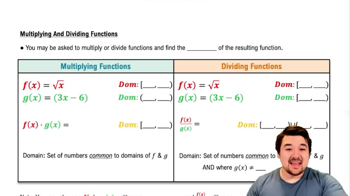Finding Formulas for Functions
Express the side length of a square as a function of the length d of the square’s diagonal. Then express the area as a function of the diagonal length.
 Verified step by step guidance
Verified step by step guidance Verified video answer for a similar problem:
Verified video answer for a similar problem:



 1:36m
1:36mMaster Introduction to Calculus Channel with a bite sized video explanation from Patrick
Start learning